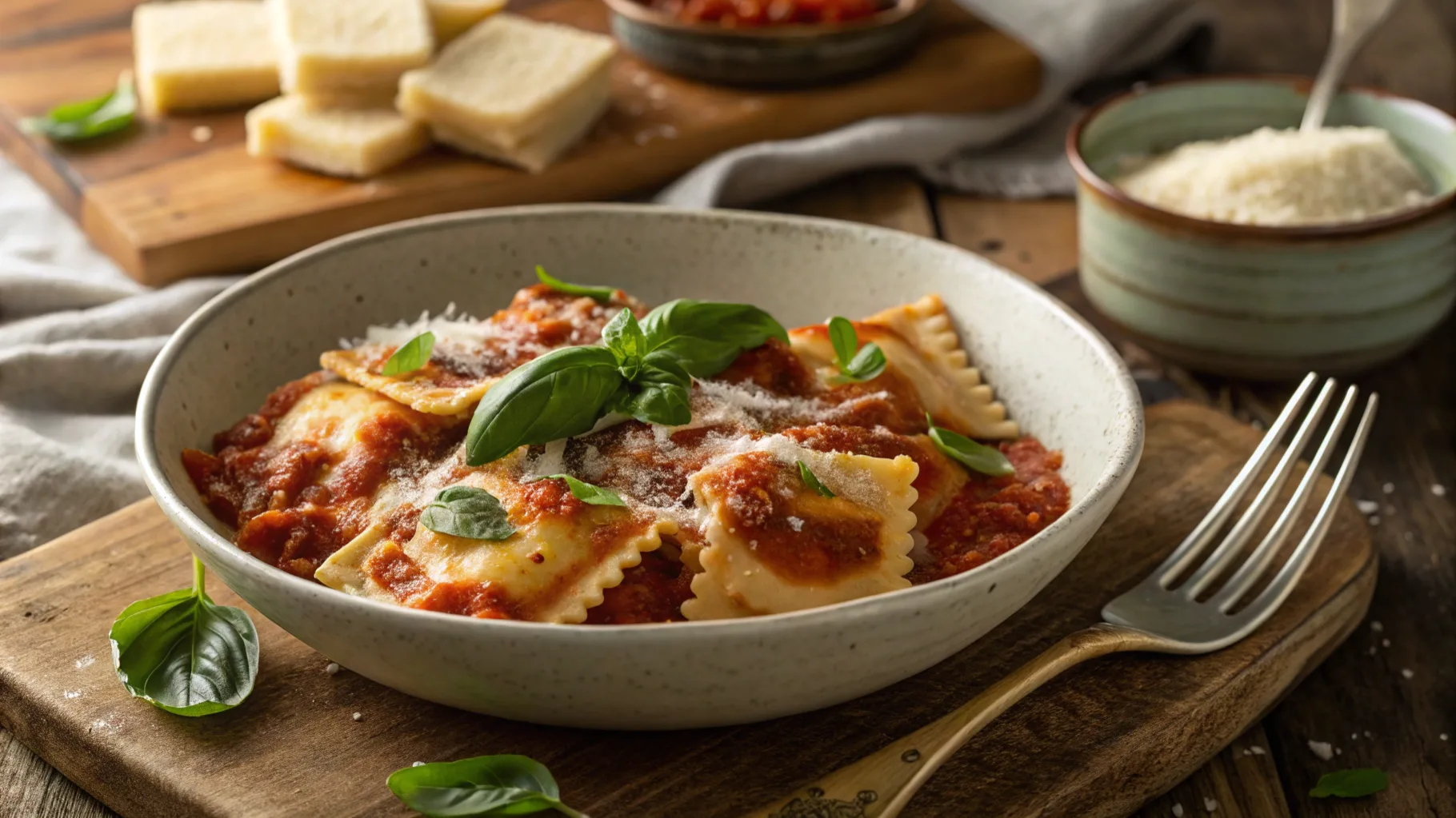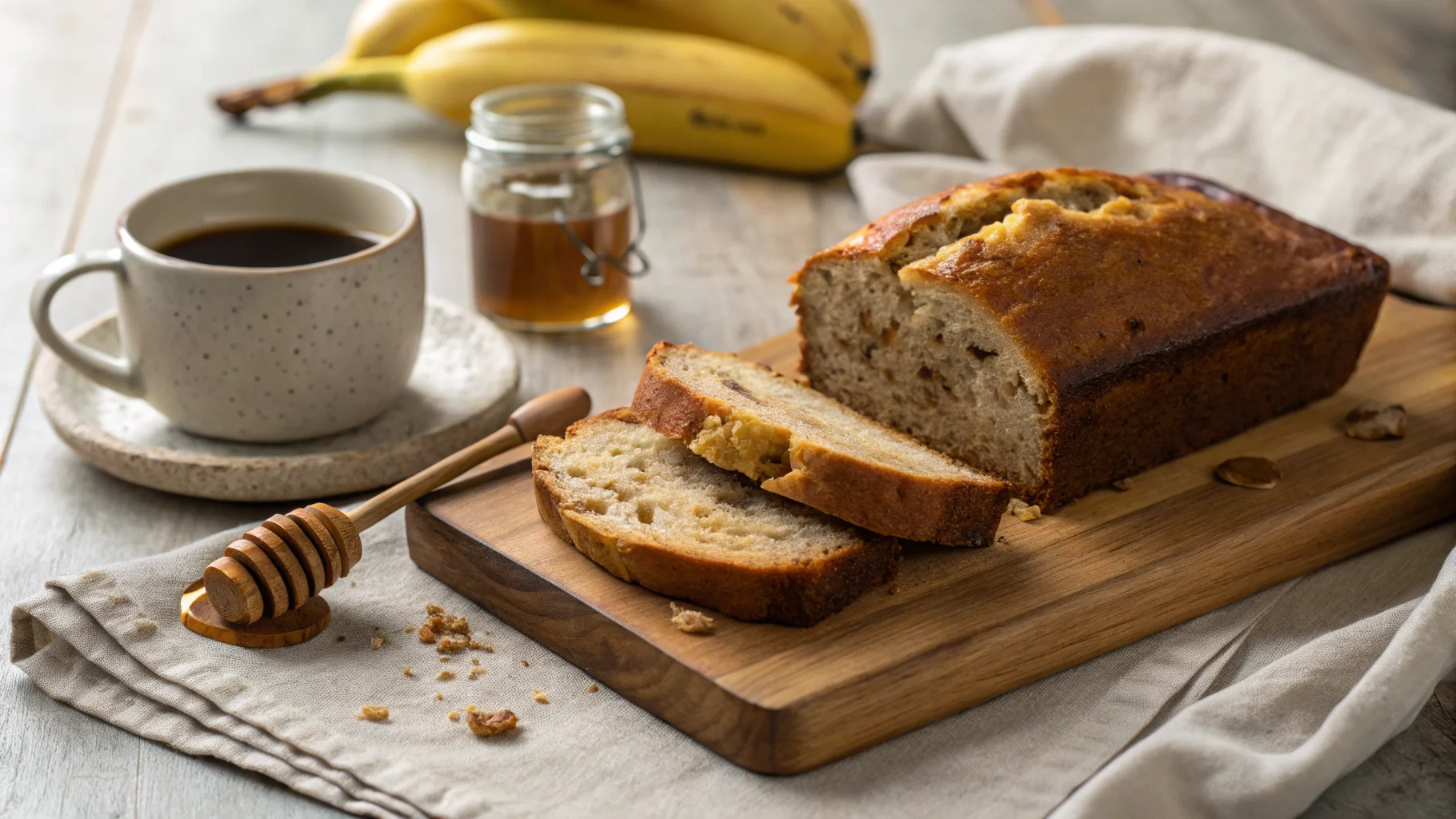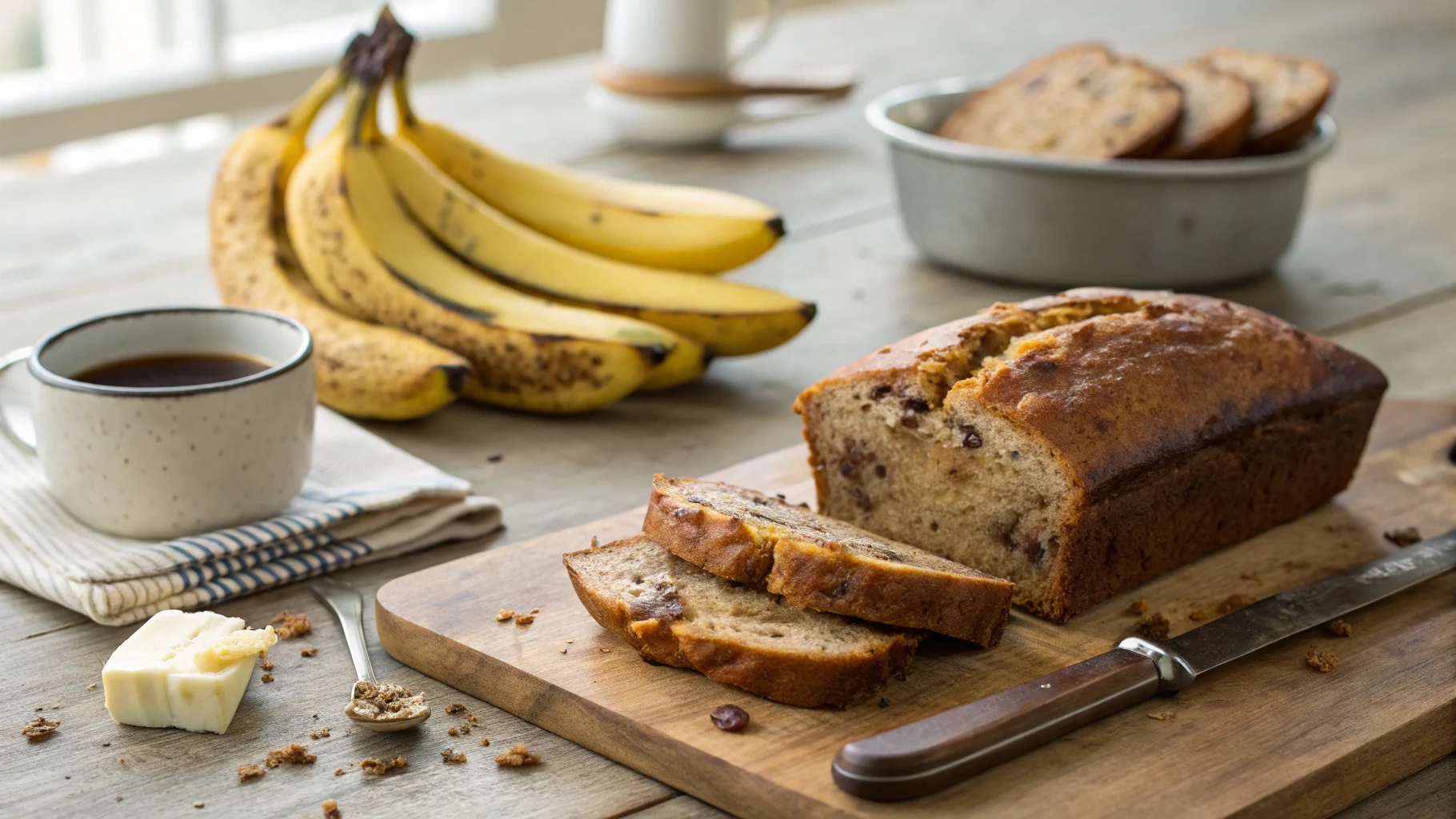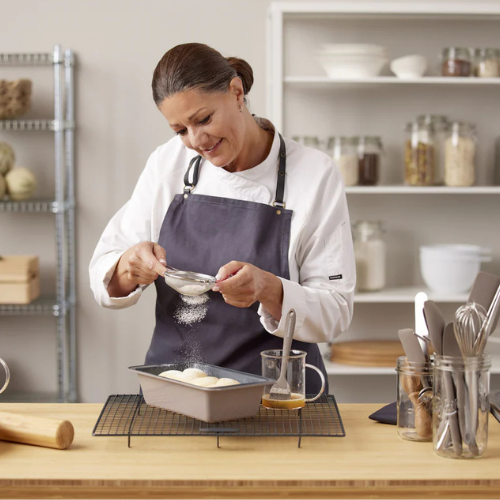Introduction
Lasagna is a classic comfort food, but sometimes, a full pan of layered pasta, sauce, and cheese is too much. That’s where Pasta baking tips come in. These smaller pasta varieties offer all the texture and flavor of traditional lasagna but in a more versatile form. Whether you’re making bite-sized portions, soup, or creative casseroles, these noodles bring convenience and fun to your cooking.
In this guide, we’ll break down what mini lasagna noodles are, their origins, and how they compare to traditional lasagna sheets. Plus, we’ll explore different types, such as Mafaldine, Reginetti, and Lasagnette, each with its unique twist on the classic pasta shape.
table of content
1.1. What Are Mini Lasagna Noodles?
Mini lasagna noodles are smaller, more flexible versions of the classic lasagna sheets. Instead of the large, flat sheets used in traditional baked lasagna, these noodles often come in narrower, shorter, or ridged forms, making them easier to use in different dishes.
Origins and Differences
- Traditional lasagna noodles are large, flat, and typically require boiling or baking before serving.
- Mini versions are often pre-cut, ridged, or curled to better hold sauces and fillings.
- Many small lasagna noodle varieties originate from Italian regional pasta traditions, where different shapes were developed to match local sauces and dishes.
One key advantage of mini lasagna noodles is their versatility. Unlike traditional sheets, they fit easily into soups, baked dishes, and even single-serving cups. They’re also ideal for those who love lasagna but want a quicker, more manageable meal.
1.2. Popular Types and Names
There are several types of mini lasagna noodles, each offering a unique texture and style. While they all serve a similar purpose, their shapes affect how they hold sauce and interact with other ingredients.
Mafaldine
Mafaldine is a ribbon-shaped pasta with wavy edges, resembling a miniature lasagna sheet. It was named after Princess Mafalda of Savoy and is known for its elegant, ruffled texture.
- Best for: Baked dishes, creamy sauces, and even simple butter and cheese preparations.
- Why use it? The ridges help sauces cling better, enhancing flavor in every bite.
Reginetti
Also called little queens, Reginetti is a smaller version of Mafaldine. These curly-edged ribbons are perfect for rich sauces and layered pasta dishes.
- Best for: Light tomato sauces, meat sauces, and casseroles.
- Why use it? The curls trap bits of meat and cheese, making every bite more flavorful.
Lasagnette
Lasagnette is exactly what it sounds like—a mini version of classic lasagna sheets. These smaller, thinner strips work well in traditional lasagna recipes but can also be used in unique dishes.
- Best for: Layered mini lasagnas, quick bakes, and lasagna-inspired soups.
- Why use it? It provides the classic lasagna feel but in a more manageable size.
Each of these mini lasagna noodles brings something different to the table. Whether you prefer the wavy elegance of Mafaldine, the curled edges of Reginetti, or the compact size of Lasagnette, there’s a perfect mini noodle for every dish.
Culinary Applications
Mini lasagna noodles are not just a smaller version of traditional pasta; they are a game-changer in the kitchen. Their compact size and unique textures make them ideal for single-serving meals, soups, and baked dishes. Whether you want a quick lasagna fix without making a full tray or a creative way to enjoy classic flavors, these noodles offer plenty of possibilities.
In this section, we’ll explore three delicious ways to cook with mini lasagna noodles: mini lasagna cups, lasagna soup, and baked casseroles.
2.1. Mini Lasagna Cups
Making mini lasagna cups is one of the best ways to enjoy lasagna without the hassle of layering a full tray. These bite-sized servings are perfect for parties, meal prep, or quick dinners. Using mini lasagna noodles makes the process even easier since they fit perfectly into muffin tins.
Why Make Mini Lasagna Cups?
- Perfect portion control—no messy slicing.
- Great for meal prepping—store them easily in the fridge or freezer.
- Customizable—make vegetarian, meaty, or cheesy variations.
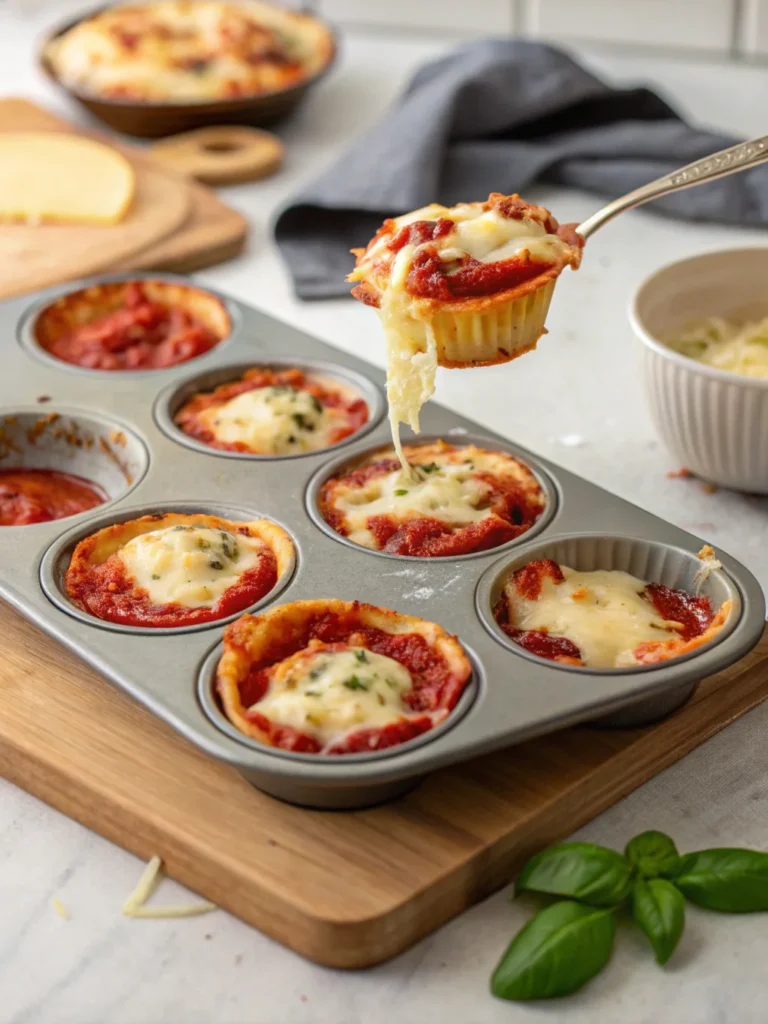
Step-by-Step Guide
Ingredients:
- 12 mini lasagna noodles (such as lasagnette or mafaldine)
- 1 cup ricotta cheese
- 1 egg
- 1 cup shredded mozzarella
- ½ cup grated Parmesan
- 1 cup marinara sauce
- ½ pound ground beef or Italian sausage (optional)
- 1 teaspoon garlic powder
- 1 teaspoon Italian seasoning
- Salt and pepper to taste
Instructions:
- Preheat the oven to 375°F and grease a muffin tin.
- Cook the mini lasagna noodles until just al dente. Drain and set aside.
- Prepare the filling by mixing ricotta, egg, Parmesan, garlic powder, Italian seasoning, salt, and pepper.
- Brown the meat, if using, then stir in the marinara sauce.
- Assemble the cups by placing a cooked noodle into each muffin tin, folding it to fit.
- Layer the ingredients—start with ricotta mixture, then sauce, then mozzarella. Repeat.
- Bake for 20 minutes or until cheese is bubbly and golden.
- Let cool slightly before removing from the tin and serving.
These mini lasagna cups bring all the rich, cheesy goodness of a full lasagna into a compact, easy-to-eat form.
2.2. Lasagna Soup
If you love the flavors of lasagna but want something cozier, lasagna soup is the answer. This dish combines the comfort of pasta with the richness of a slow-simmered sauce. Using mini lasagna noodles instead of broken pasta sheets makes each bite satisfying and easy to eat.
Why Try Lasagna Soup?
- Easier to make than traditional lasagna—no layering required.
- Great for meal prep—flavors develop even more overnight.
- Perfect for cold weather—warm, rich, and hearty.

Step-by-Step Guide
Ingredients:
- 8 ounces mini lasagna noodles (such as reginetti or lasagnette)
- 1 tablespoon olive oil
- 1 pound ground beef or Italian sausage
- 1 small onion, diced
- 3 cloves garlic, minced
- 4 cups chicken or beef broth
- 2 cups marinara sauce
- 1 can diced tomatoes (14 oz)
- 1 teaspoon Italian seasoning
- ½ teaspoon red pepper flakes (optional)
- 1 cup shredded mozzarella
- ½ cup ricotta cheese
- ¼ cup grated Parmesan
- Fresh basil for garnish
Instructions:
- Heat olive oil in a large pot over medium heat.
- Sauté onions and garlic until fragrant.
- Brown the meat, breaking it apart as it cooks. Drain excess fat.
- Add broth, marinara sauce, tomatoes, and seasonings. Bring to a simmer.
- Stir in mini lasagna noodles and cook until tender.
- Remove from heat and stir in mozzarella.
- Serve with a dollop of ricotta and a sprinkle of Parmesan. Garnish with basil.
This lasagna soup is packed with bold flavors and makes a great one-pot meal. The mini lasagna noodles soak up the sauce perfectly, giving it that signature lasagna taste in a spoonable form.
2.3. Casseroles and Bakes
Traditional lasagna takes time to assemble, but casseroles and baked dishes using mini lasagna noodles offer a faster alternative. Instead of carefully layering sheets, you can mix everything together and let the oven do the work.
Why Use Mini Lasagna Noodles in Casseroles?
- Speeds up prep time—no delicate layering needed.
- Works well with different proteins—chicken, beef, or even seafood.
- More texture in every bite—ridged noodles help hold sauce better.
Baked Mini Lasagna Noodles Recipe
Ingredients:
- 12 ounces mini lasagna noodles
- 2 cups marinara sauce
- 1 pound cooked ground turkey or beef
- 1 cup ricotta cheese
- 1 cup shredded mozzarella
- ½ cup grated Parmesan
- 1 teaspoon garlic powder
- 1 teaspoon dried basil
- Salt and pepper to taste
Instructions:
- Preheat oven to 375°F.
- Boil mini lasagna noodles until al dente. Drain and set aside.
- Mix ricotta, garlic powder, basil, salt, and pepper in a bowl.
- Combine noodles, marinara sauce, and cooked meat in a baking dish.
- Add ricotta mixture in spoonfuls, stirring lightly.
- Top with mozzarella and Parmesan.
- Bake for 20-25 minutes or until cheese is melted and bubbly.
- Let sit for 5 minutes before serving.
This dish offers all the flavors of classic lasagna but is much simpler to prepare. The mini lasagna noodles blend with the sauce and cheese, creating a creamy, comforting casserole.
Final Thoughts in Cooking
Whether you choose mini lasagna cups, lasagna soup, or a baked casserole, mini lasagna noodles make cooking more flexible and fun. Their small size means faster cooking times, better sauce coverage, and easy portioning.
In the next section, we’ll cover cooking techniques, sauce pairings, and storage tips to help you make the most of these unique noodles.
Cooking and Preparation Tips
Cooking mini lasagna noodles correctly makes all the difference in how they hold up in dishes. Whether you are boiling them for a soup, layering them in a casserole, or storing them for future use, following the right techniques ensures the best texture and flavor.
This section covers essential cooking and preparation tips, including boiling and handling, sauce pairings, and storage methods.
3.1. Boiling and Handling Mini Lasagna Noodles
Boiling mini lasagna noodles properly is key to achieving the ideal texture. Since they are smaller than traditional lasagna sheets, they require different cooking times and handling methods.
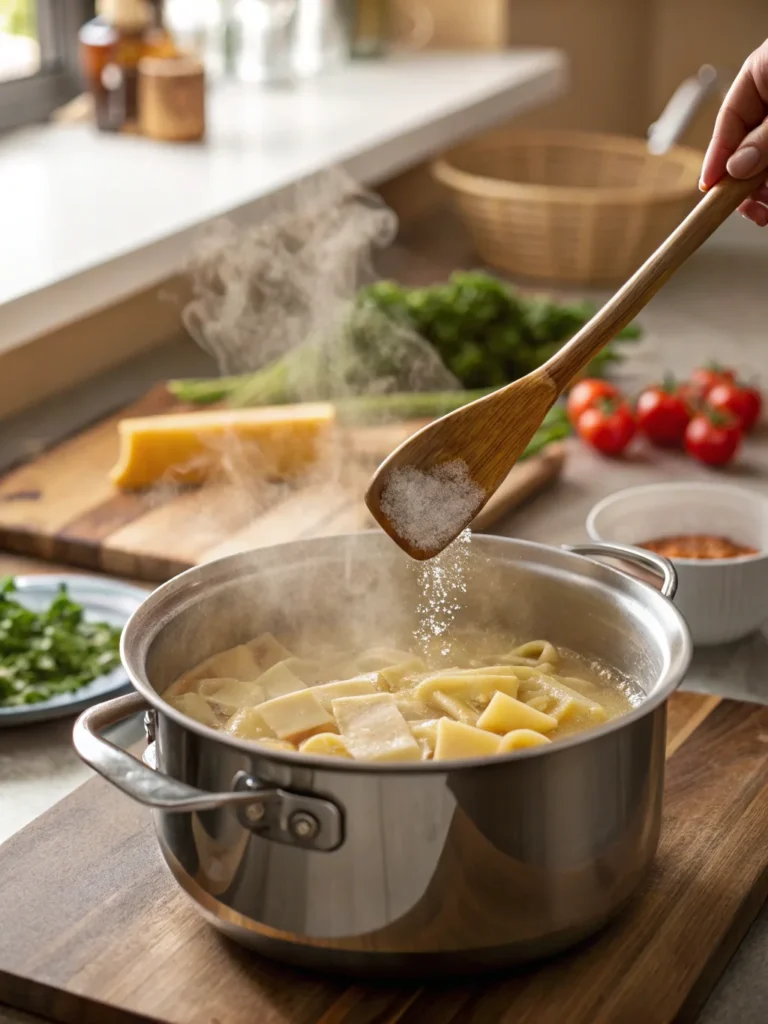
Best Practices for Boiling
- Use plenty of water: Smaller noodles tend to stick together, so using at least 4 quarts of water per 8 ounces of pasta prevents clumping.
- Add salt: Seasoning the water enhances the noodles’ natural flavor. Aim for about 1 tablespoon of salt per gallon of water.
- Stir frequently: Because mini lasagna noodles have more surface area exposed, they can stick to the bottom of the pot. Stir gently every minute to prevent this.
- Cook until al dente: Most varieties take 7 to 9 minutes to cook. Overcooking can make them too soft, causing them to break apart when mixed with sauce.
- Drain but don’t rinse: Rinsing removes the starch that helps sauces cling to the noodles. However, if you’re making a cold dish, a quick rinse prevents sticking.
Handling Cooked
Once cooked, mini lasagna noodles need careful handling to prevent breaking:
- Lay them flat on a baking sheet if not using immediately to avoid sticking.
- Toss them with a little olive oil to keep them from clumping together.
- Use immediately or store properly to maintain texture and prevent drying out.
3.2. Pairing Mini Lasagna Noodles with Sauces
Choosing the right sauce enhances the overall texture and flavor of mini lasagna noodles. Because of their small size and sometimes ruffled or curled edges, they work best with sauces that cling well.
Best Sauce Pairings
- Tomato-Based Sauces
- Marinara
- Bolognese
- Arrabbiata
- These classic red sauces coat the noodles well and add rich depth to lasagna-based dishes.
- Creamy Sauces
- Alfredo
- Ricotta-based mixtures
- Parmesan cream sauce
- Creamy sauces bring a smooth, velvety texture that complements the structure of mini lasagna noodles.
- Pesto and Herb Sauces
- Basil pesto
- Garlic and olive oil
- Sun-dried tomato pesto
- Light oil-based sauces add freshness while allowing the noodle shape to stand out.
- Broth-Based Sauces
- Chicken broth with vegetables
- Beef broth with ground sausage
- These are perfect for lasagna soup, allowing mini lasagna noodles to absorb the flavors.
Tips for Combining with Sauces
- Use thicker sauces for baked dishes: A hearty sauce prevents the noodles from drying out.
- Thin out cream-based sauces with a little pasta water: This helps coat the noodles evenly without making the dish too heavy.
- Mix sauces before layering: When making mini lasagna cups or casseroles, combining cheese, meat, and sauce beforehand prevents dry spots.
3.3. Storage and Shelf Life of Mini Lasagna Noodles
Proper storage keeps mini lasagna noodles fresh and prevents waste. Whether you have uncooked noodles in the pantry or leftover cooked pasta, following the right methods ensures the best results.
Storing Uncooked Mini Lasagna Noodles
- Keep in an airtight container: Exposure to air can cause pasta to absorb moisture and become brittle.
- Store in a cool, dry place: Heat and humidity can cause dry pasta to degrade faster.
- Check expiration dates: Although dry pasta lasts up to 2 years, using it within a year ensures the best quality.
Storing Cooked Mini Lasagna Noodles
- Refrigerate within 2 hours: Leaving cooked pasta at room temperature too long can lead to spoilage.
- Use an airtight container: This prevents the noodles from drying out and absorbing unwanted fridge odors.
- Toss with olive oil before storing: This prevents sticking and makes reheating easier.
Freezing Cooked Mini Lasagna Noodles
- Lay flat on a baking sheet first: Freezing in a single layer prevents the noodles from clumping together.
- Transfer to a freezer-safe bag: Once frozen, store them in an airtight bag or container.
- Label with a date: Cooked pasta stays good for up to 2 months in the freezer.
Reheating Mini Lasagna Noodles
- For refrigerated noodles: Reheat in a pan with a splash of water or broth to restore moisture.
- For frozen noodles: Thaw in the refrigerator overnight before reheating.
- For baked dishes: Cover with foil and reheat in a 350°F oven for 15-20 minutes.
Final Thoughts on Cooking and Preparing Mini Lasagna Noodles
Mastering the cooking, sauce pairing, and storage of mini lasagna noodles makes them even more versatile. By following these tips, you can ensure the best texture and flavor, whether you’re making lasagna soup, mini lasagna cups, or a baked casserole.
In the next section, we’ll answer common questions about Mafaldine, covering everything from gluten-free options to layering techniques.
Frequently Asked Questions (FAQs)
Many people have questions about Mafaldine, from their different names to how they should be prepared. Whether you’re curious about layering techniques, gluten-free options, or where to buy them, this FAQ section provides clear answers.
4.1. What Are the Small Lasagna Noodles Called?
Mini lasagna noodles go by several names, depending on the brand and regional variations. Unlike traditional flat lasagna sheets, these noodles are smaller and often have ridged or wavy edges to hold sauce better.
Common Types
- Mafaldine – Also called Reginette, this ribbon-like pasta has curly edges and is great for baked dishes.
- Reginetti – A smaller version of Mafaldine, commonly used for lighter sauces and quick meals.
- Lasagnette – Miniature lasagna sheets that work well in individual portions and soups.
- Mini Lasagna Cuts – Some pasta brands sell pre-cut, small lasagna sheets labeled as “mini lasagna.”
Each of these varieties offers a unique texture, making them perfect for different styles of cooking.
4.2. How to Make Lasagna Noodles?
Homemade pasta is always a great option, and making Mafaldine from scratch is easier than it sounds. The process involves just a few ingredients, and the result is fresh pasta with a superior texture.
Basic Homemade Recipe
Ingredients:
- 2 cups all-purpose flour or semolina flour
- 2 large eggs
- ½ teaspoon salt
- 1 tablespoon olive oil
- Water (as needed)
Instructions:
- Make a flour well on a clean surface and crack the eggs in the center.
- Add salt and olive oil, then slowly mix the flour into the eggs using a fork.
- Knead the dough for 8-10 minutes until smooth. Add water if too dry.
- Let the dough rest for 30 minutes.
- Roll out the pasta using a rolling pin or pasta machine until thin.
- Cut into strips to create mini lasagna shapes.
- Boil for 2-3 minutes before using in recipes.
Homemade Homemade pasta bring a fresh, delicate texture that complements any sauce or filling.
4.3. What Type of Pasta Is Best for Lasagna?
The best pasta for lasagna depends on the recipe and texture preference. While traditional lasagna sheets are the standard choice,Mafaldine offer a more convenient option for soups, casseroles, and individual servings.
Best Pasta Types for Lasagna Dishes
- Traditional lasagna sheets – Ideal for classic layered lasagna.
- Mini lasagna noodles (Lasagnette, Mafaldine, Reginetti) – Best for bite-sized Mafaldine, soups, and baked pasta.
- No-boil lasagna noodles – Saves time but absorbs more liquid, affecting texture.
- Fresh pasta sheets – Offers a delicate, soft bite compared to dry pasta.
For soups and casseroles,Homemade pasta work better than full-sized sheets since they are easier to eat and absorb flavors well.
4.4. How Many Layers of Noodles Do You Need for Lasagna?
The number of layers in lasagna affects the structure and texture of the dish. Traditional lasagna has at least three to four layers, but when using Homemade pasta adjustments may be needed.
Layering Tips
- For mini lasagna cups – Use two to three layers for perfect portion control.
- For lasagna soup – No layering needed; just stir the noodles in.
- For baked mini lasagna casseroles – Three layers provide a good balance of pasta, sauce, and cheese.
- For classic lasagna – Aim for four layers or more for a well-structured dish.
Regardless of the number of layers, using enough sauce ensures that the Pasta storage cook evenly and remain flavorful.
4.5. Are There Gluten-Free Options for Mini Lasagna Noodles?
Yes, several brands offer gluten-free Pasta storage, making it easy to enjoy lasagna without wheat-based pasta. These alternatives are made from ingredients like rice flour, chickpea flour, or corn flour.
Popular Gluten-Free Mini Lasagna Noodle Brands
- Barilla Gluten-Free Oven-Ready Lasagna – Made from a rice and corn blend.
- Jovial Gluten-Free Lasagna – Organic brown rice pasta with a traditional texture.
- Tinkyáda Brown Rice Pasta Lasagna – A great option for those avoiding corn-based pasta.
- Banza Chickpea Lasagna – High in protein and gluten-free.
When cooking gluten-free Pasta storage, be sure to stir frequently while boiling to prevent sticking, as these varieties tend to be more delicate than wheat-based pasta.
4.6. Where Can I Purchase Mini Lasagna Noodles?
Pasta baking tips can be found in major grocery stores, specialty Italian markets, and online retailers. Since not all stores carry every variety, knowing where to shop helps find the best options.
Best Places to Buy
Grocery Stores
- Walmart – Carries brands like Barilla and Great Value lasagna.
- Kroger – Offers standard lasagna sheets and sometimes mini variations.
- Whole Foods – Good for organic and gluten-free pasta options.
Online Retailers
- Amazon – A wide selection, including imported Italian brands.
- Thrive Market – Best for organic and specialtyPasta storage
- Pasta USA – Sells high-quality Italian-made lasagna noodles.
Specialty Italian Markets
- Local Italian delis often carry Mafaldine and Lasagnette.
- Eataly (in select cities) has artisanal lasagna noodle varieties.
For the best selection, online retailers provide the most variety, while local stores offer convenience.
Final Thoughts on FAQs
From different types and layering techniques to gluten-free options and where to buy them, understanding Pasta storage makes meal preparation easier. These noodles are a great alternative to traditional sheets, offering versatility for soups, baked dishes, and single-serve portions.
Next, we’ll wrap up with a conclusion that highlights the key points and encourages experimenting with Pasta storage in creative ways.

